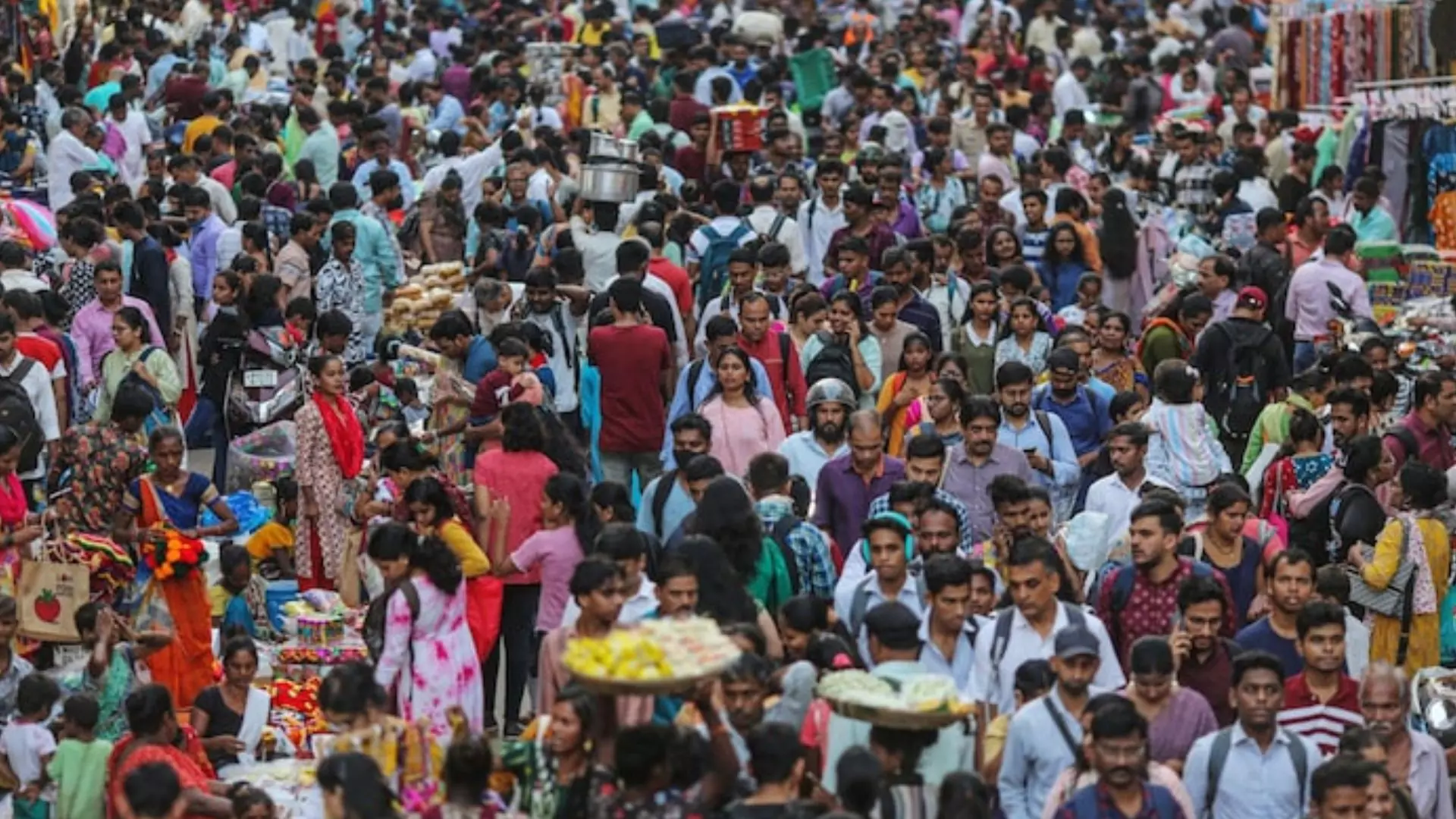The global population is projected to reach an impressive 8.09 billion on January 1, 2025, marking an increase of over 71 million people in 2024, according to estimates from the US Census Bureau. As the world continues to grow, India remains the most populous country, with an estimated population of 1.41 billion as of 2024.
A Milestone in Global Population Growth
According to the US Census Bureau, the projected world population on January 1, 2025, is expected to hit 8,092,034,511, which reflects a growth of 71,178,087 people, or an increase of 0.89 percent, from New Year’s Day 2024.
In the first month of 2025 alone, the world will experience 4.2 births and 2.0 deaths every second. This shows the continuing rapid pace of global population growth, despite a slight decrease in the annual growth rate compared to 2023.
Slower Growth Than Last Year
The 2024 global population increase of 0.9 percent is slightly less than the 1.0 percent increase recorded in 2023. In 2023, the world’s population grew by a total of 75 million people. The slowing growth rate may be attributed to various factors such as lower birth rates in some countries and increased awareness of sustainable population growth.
World Population Clock: A Real-Time Snapshot
The US Census Bureau provides real-time updates on global population trends through its Population Clock. At the end of each year, the bureau updates its series of population estimates, which are used to adjust the short-term projections. These updates are made using monthly projections, and daily population changes are calculated based on interpolation.
The Census Bureau’s statement clarified that, “Within each calendar month, the daily numerical population change is assumed to be constant, subject to negligible differences caused by rounding.” This means that the daily population change is fairly stable, with only minor fluctuations due to rounding errors.
Population Growth in the United States
The US is experiencing steady population growth, although at a slower pace than some other countries. According to the Census Bureau, the United States will see one birth every 9 seconds and one death every 9.4 seconds in January 2025. Additionally, international migration will contribute to population growth in the country, with one person being added to the US population every 23.2 seconds.
In 2024, the US is expected to add 2,640,171 people, reflecting an increase of 0.78 percent. This continues a trend of moderate population growth in the US, following a total increase of around 9.7 million people in the 2020s, which represents a growth rate of 2.9 percent. In comparison, the country’s population growth in the 2010s was slower, with an increase of only 7.4 percent, the lowest rate since the 1930s.
India and China: The Two Most Populous Countries
As of mid-2024, India is the most populous country in the world, with an estimated population of 1,409,128,296 people (around 1.41 billion). India is closely followed by China, which has a population of 1,407,929,929 (approximately 1.41 billion). While India continues to lead in population size, China’s growth rate has slowed significantly, in part due to its aging population and declining birth rates.
In the coming years, India is expected to maintain its position as the most populous country, with projections suggesting it will continue to grow at a rapid pace due to its relatively young population and high birth rates.
Other Notable Population Figures
In addition to India and China, the United States remains one of the most populous countries in the world. As of January 2025, the US population is expected to reach 341,145,670, with an increase of 2,640,171 people, or 0.78 percent, compared to the previous year.
Global Population Trends and Future Projections
The steady rise in the global population is a sign of ongoing demographic shifts that will shape the future. With countries like India and the US experiencing continued growth, and others like China seeing slower growth, these population dynamics will have a profound impact on global resources, economies, and social structures.
As the world approaches a population of 8.1 billion people, it will be important for governments, businesses, and communities to plan for the future in ways that support sustainable development, address challenges like climate change, and ensure equitable access to resources for all.
With population growth continuing to slow in some regions and accelerate in others, the coming years will present both challenges and opportunities as the world adapts to a growing and increasingly interconnected population.























